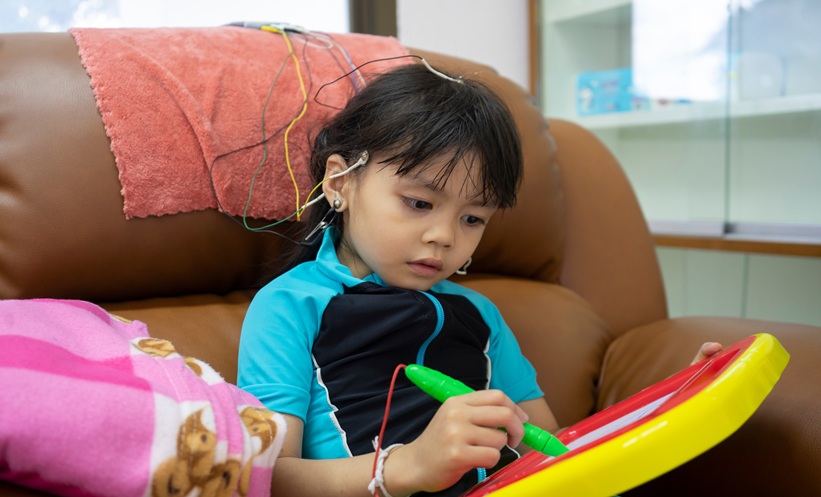This year, the 6th Annual Meeting of the European Academy of Neurology (EAN) took place virtually as a result of the ongoing COVID-19 pandemic. The hard work that the academy invested behind the scenes was proven by the quality of the platform, which was built in an expeditious 8 weeks. An impressive 42,000 people from over 150 countries registered to attend the congress, making it the largest neurological meeting in history. Registration fees were waived for this year’s congress, making the meeting even more accessible to those eager to learn the latest in neurology.
The opening ceremony commenced with an inspirational message: “In a time when the world is facing an unprecedented storm, solidarity becomes crucial and our humanity is more important than ever. Together we will adapt, overcome, find new ways, and use today’s technologies to share our ideas wherever we are. This is a changing time. A time full of challenges, new opportunities, forward thinking, love, community, and dedication, for a future that is ours to shape.” Acting President Prof Claudio Bassetti then introduced attendees to the ceremony, wishing the EAN President Prof Franz Fazekas good health after he was taken ill earlier in the year. Among Prof Bassetti’s many encouraging words in the opening ceremony, he said: “Difficult times ask for creative and courageous decisions, which may open new avenues for a better future.”
Prof Yann LeCun, considered to be one of the founding fathers of artificial intelligence and deep learning, delivered the opening lecture. In this he explained that: “Deep learning has its root in neuroscience; people in the ’40s and ’50s were inspired by the brain to design machines that were capable of learning.” Adding to this, he commented that the type of model that is currently very popular is called artificial neural networks (i.e., deep learning), the structure of which is often likened to the brain with simple elements and weights being the equivalent of neurons and synapses, respectively.
The presidential symposium was delivered by the three respective award winners. The Moritz Romberg Lecture was presented by Prof Giorgio Cruccu, in which he discussed the pathophysiology of pain and the importance of being familiar with it to effectively treat patients. Prof Steven Laureys delivered The Charles-Édouard Brown-Séquard Lecture, in which he described the current understanding of chronic disorders of consciousness and challenged the outdated view that consciousness is all or nothing. Finally, the Brain Prize Lecture given by Prof Hughes Chabriat detailed the journey that led to the discovery of CADASIL and our understanding of the disease today.
The overarching theme of the congress this year could not have been more relevant: “Time for Action: Predict, Prevent, Repair.” Presentations throughout the congress captured the importance of the theme, but in particular the plenary session covered the role of inflammation in stroke prevention, the basic science and clinical care for the prevention of disability progression in multiple sclerosis, the evidence surrounding when is best to perform surgery in patients with epilepsy, and halting neurodegeneration and inducing repair in Huntington’s disease.
Dissemination of breakthroughs in neurology was further achieved by the delivery of over 300 sessions, more than 1,000 posters, and the EAN Brain Challenge, all of which covered the big seven: epilepsy, stroke, headache, multiple sclerosis, dementia, movement disorders, and neuromuscular disorders.
In the opening ceremony, Prof Bassetti commented that the success of the virtual congress may lead to the consideration of hybrid congresses in the future, providing the opportunity for those that are not able to attend the face-to-face meeting to still attend the sessions online around the world. We look forward to being able to attend what will sure to be another great meeting next year in Helsinki, Finland; until then, please enjoy the following review of EAN’s 2020 Virtual Meeting.
Increased Risk of Repeat Stroke with Disturbed Sleep
DISTURBED sleep–wake cycles following stroke can contribute to the risk of recurrent stroke. Complications following stroke can commonly include sleep–wake disturbances, however a Swiss study presented at the European Academy of Neurology (EAN) virtual congress showed that those patients with sleep–wake disturbances post-stroke have an increased risk of repeat stroke or other cardio-cerebrovascular events in the 2 years following their stroke.
Sleep–wake disturbances complicate post-stroke recovery for many patients, such as insomnia, restless leg syndrome, sleep-disordered breathing, or extreme long or short sleep duration. More than one-third of patients in a study in Switzerland met criteria for insomnia, 26% were found to have sleep-disordered breathing, 8% met criteria for restless leg syndrome, and approximately 15% reported longer sleep duration. These sleep–wake disturbances were collated to describe a ‘sleep burden index’ for each patient. Those with a high sleep burden index were more likely to have a cerebro-cardiovascular event in the 2 years post-stroke (odds ratio: 2.10 per index unit, 95% confidence interval: 1.34–3.30, p<0.01).
The study of 438 patients aged 21–86 years followed these patients for 2 years after acute ischaemic stroke or transient ischaemic attack. The study assessed sleep-disordered breathing in the immediate post-stroke period with respirography, collated symptoms of sleep disturbance at 1, 3, 12, and 24 months, and tracked rates of cardio-cerebrovascular events over the 2 years.
Dr Martijn Dekkers and Dr Simone Duss from the University of Bern, Bern, Switzerland explained the background to their study: “We know that people who have had a stroke often experience sleep disorders, and that these are associated with worse stroke recovery outcomes.” They went on to explain the intent behind their study: “What we wanted to learn from this study was whether sleep–wake disturbances in particular are associated with worse outcomes after stroke.”
These findings further the understanding that sleep disturbances are common complications for patients following ischaemic stroke and should be considered in their comprehensive management. Identifying the increased risk of recurrent stroke or cardio-cerebrovascular event associated with these sleep–wake disturbances is a first step. Future studies could determine the value of assessment and improvement of sleep patterns for potentially reducing the risk of recurrent stroke or improving long-term outcomes following stroke.
Social Isolation Can Increase Cardiovascular Events by Over 40%
SOCIAL isolation has been linked to an increase in the risk of heart attacks, strokes, and death from all causes, according to an EAN press release dated 22nd May 2020. The study was led by Dr Janine Gronewold and Prof Dirk Hermann of the University Hospital in Essen, Germany, which found that those who are socially isolated are almost 50% more likely to die from any cause and over 40% more likely to have a cardiovascular event.
In total, 4,316 individuals, with an average age of 59.1 years, were involved in the Heinz Nixdorf Recall study, and were followed-up for an average of 13.0 years. None of the study participants entered the trial with known cardiovascular disease and data were collected initially on the types of social support they received, as well as their marital status and cohabitation, contact with close friends and family, and membership of community organisations.
Analysing the study data revealed that 339 cardiovascular events, such as heart attacks and strokes, occurred during the follow-up, alongside 530 deaths. The researchers adjusted for standard cardiovascular risk factors that could have contributed to these events and the results showed that a lack of social interaction was associated with increases in future risk of cardiovascular events by 44% and risk of death from all causes by 47%. An additional finding was that lack of financial support was linked to an increase of risk of cardiovascular events by 30%. Dr Gronewold remarked that strong social relationships play a similar role to “classical protective factors such as having a healthy blood pressure, acceptable cholesterol levels, and a normal weight.”
Prof Karl-Heinz Jöckel, a co-author of the study, noted the importance of these findings in the current climate: “This observation is of particular interest in the present discussion on the COVID-19 pandemic, where social contacts are or have been relevantly restricted in most societies.” The researchers disclaim that they do not yet understand why socially isolated individuals have poorer health outcomes, but that by effectively increasing social interaction we can improve overall health and longevity.
Medical Students Are Increasingly Using Psychostimulants
PSYCHOSTIMULANT use by medical students who are in training is reportedly widespread and increasing, according to a study conducted by a team of researchers from the Istanbul Science University, Istanbul, Turkey, and presented in a press release at EAN dated 24th May 2020.
In the study, 194 medical students completed an online survey which included questions that evaluated their use of stimulants and the side effects they experienced, in addition to their academic performance grades. The results from the students in their first year of study (n=93; control group) were compared with those in their fourth, fifth, and sixth year of study (n=101; study group).
Dr Suna Ertuğrul, Istanbul Science University, explained that over the last two decades, university campuses have been concerned about the non-medical use of prescription stimulants. Dr Ertuğrul commented that: “Medicine is one of the longest and most competitive degrees to study for and many students believe that using stimulants helps to enhance their academic performance and live an active life.”
Psychostimulants, such as methylphenidate and modafinil, were used by 16.1% of those in the study group, compared with 6.8% of the control group. Side effects including insomnia, high heart rate, and agitation were reported in three-quarters of the study group. There were no differences in the academic performance between the groups, a notable finding given the common belief that psychostimulants would improve academic outcome.
Dr Ertuğrul summarised by saying: “Our study confirms that stimulant use increases during the course of studying for a medical degree, but that this does not improve academic performance as these students believe.”
Research into 2,149 Epilepsy-Related Deaths Could Lead to Changes in Epilepsy Care
REASONS for the higher risk of early death faced by patients with epilepsy are currently unclear. This chronic disease affects 50 million individuals worldwide and can cause seizures and confusion, and patients often experience stigmatisation and discrimination. The Scottish Epilepsy Deaths Study (SEDS) aimed to identify the burden of potentially avoidable epilepsy-related deaths and found that mortality rates for epilepsy-related deaths did not decrease between 2009 and 2015. This is according to findings presented at the EAN Virtual Congress in a press release dated 25th May 2020.
The study suggested that there remains an increased risk of epilepsy-related deaths in young adults despite new developments in treatment of the disease. Exposing preventable risk factors could lead to advancements in epilepsy care with the long-term goal of reducing total number of deaths from epilepsy. The researchers identified 2,149 epilepsy-related deaths between 2009 and 2016. The mortality rate for these deaths in 2009 was 6.8 per 100,000, while in 2015 the mortality rate was calculated to be 9.1 per 100,000. Young adults in their early 20s and 30s were at the highest risk of death, and those aged 16–24 years had a six-fold increased risk of mortality. Of the epilepsy-related deaths under the age of 55 years, 78% were considered to be potentially avoidable. In the years before their death, most patients (n=1,276) had a seizure- or epilepsy-related incident resulting in hospital admission; however, only 516 patients were cared for in a neurology clinic. Sudden unexpected death in epilepsy, aspiration pneumonia, cardiac arrest, congenital malformation, and alcohol-related deaths were among the most common causes of death reported in the study. This research is a breakthrough of epilepsy care and will help to identify which factors most place patients at risk of death; the data will be compared with living patients with epilepsy of the same age and sex to achieve this.
Dr Gashirai Mbizvo, one of researchers from the study conducted at The University of Edinburgh, Edinburgh, UK, outlined his ambition for the trial: “We hope that we can use this data to learn lessons and reduce the burden of epilepsy-related deaths in the future, many of which we believe are likely to be avoidable.”
Recreational Use of Laughing Gas is Associated with Neurological Issues
LAUGHING GAS, or nitrous oxide, is used as an anaesthetic agent in dental practice and during labour. However, its use recreationally is increasing, with growing numbers of patients reporting to specialists and emergency rooms with neurological issues associated with its use, according to a study from the Netherlands and stated in a press release from EAN 2020 dated 24th May.
The study conducted by Zuyderland Medical Center, Heerlen, the Netherlands, included 13 patients who had been treated at the centre between 2017 and 2019. The average age of the patients was 21 years. Paraesthesias (tingling and numbness in the hands, legs, arms, and feet) and weakness in the lower limbs were the most common symptoms reported by the patients. The clinical diagnosis of axonal polyneuropathy was made in eight patients (62%), while two patients (15%) demonstrated evidence of spinal cord degeneration, and three (23%) showed clinical symptoms of both conditions. Vitamin B12 supplementation was given to all patients, and they were advised to stop using laughing gas.
Dr Anne Bruijnes, Zuyderland Medical Center, the presenter of the study, commented that in their neurological practice they are seeing an escalating number of patients with neurological problems from recreational use of laughing gas. Dr Bruijnes added that although most of their patients make a full recovery, some patients continued to experience minor symptoms and three had difficulties carrying out everyday activities and had to be referred to rehabilitation physicians.
An important factor in the increasing use of laughing gas is that many users are unaware of the potential consequences, which can also include paranoia, breathing problems, and even death. Dr Bruijnes concluded: “Whilst this study is on a relatively small sample, we know that laughing gas use is on the increase. We now know that it causes a vitamin B12 deficiency, which can affect the spinal cord and lead to permanent damage if not treated promptly.”
Association Between Urbanisation and the Increased Risk of Multiple Sclerosis
VARIOUS genetic and environmental risk factors have been studied extensively and associated with the development of multiple sclerosis (MS). Environmental factors at the centre of research include vitamin D levels and smoking; however, according to findings from an Italian study presented in a press release at EAN 2020 Virtual dated the 23rd May, air pollutants may be a risk factor for MS.
The study results suggested that air pollution interacts through several mechanisms in the development of MS, therefore the researchers recruited a study sample of over 900 MS patients in Lombardy, Italy. Within the region, winter is the season with the highest pollutant concentration so the analysis was conducted then. According to the World Health Organization (WHO), 4.2 million deaths are attributed yearly to ambient air pollution. Particulate matter (PM), the sum of all solid and liquid particles suspended in air, can be divided into two categories; PM10 and PM2.5, which include particles with a diameter of ≤10 µm and ≤2.5 µm, respectively, are both considered major pollutants and have been previously linked to heart and lung disease, cancer, and respiratory issues.
The analysis compared three different areas within the Lombardy region based on their levels of urbanisation and found that two were above the European Commission threshold for air pollution. The study further revealed that MS rates in the region rose from 16 cases per 100,000 inhabitants in 1974 to approximately 170 cases per 100,000 inhabitants today. Although this increase could be a result of the improved survival rates for MS patients, it may also be linked to greater exposure to risk factors. The study correlated a reduced risk for MS in individuals residing in rural areas that have lower levels of PM, and showed that the MS risk, adjusted for urbanisation, was 29% higher among individuals living in more urbanised areas.
According to lead researcher Prof Roberto Bergamaschi, these findings support the hypothesis that air pollutants are involved in the development of MS. He further noted: “In the higher risk areas, we are now carrying out specific analytical studies to examine multiple environmental factors possibly related to the heterogeneous distribution of MS risk.” With the number of people affected by MS growing globally, findings from these future studies may provide a better insight into the prevention and management of the disease.








